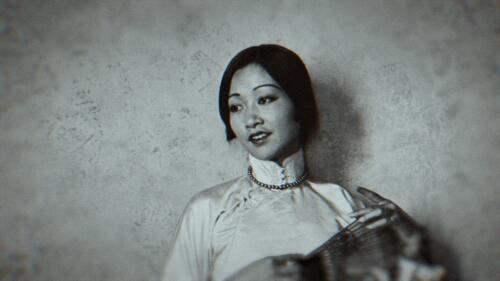Asian American, Native Hawaiian & Pacific Islander History
Asian Americans, Native Hawaiian and Pacific Islanders have played vital roles in shaping the nation—from building the Transcontinental Railroad to advocating for labor law changes to fighting in multiple wars. They made these contributions while also facing persistent discrimination and violence throughout U.S. history.
Featured Overview
Discover five history-making figures in the AANHPI community who redefined the American story.

Featured Overview
Discover five history-making figures in the AANHPI community who redefined the American story.
Start Here

Asian immigrants have come to American shores since the mid-1800s, playing a significant role in U.S. history, but one that’s rife with inequity and exclusion. See a timeline of key events.

Facing economic threats and violence, early Chinese immigrants banded together and created communities to survive—and thrive.

Hawaii became part of the union more than six decades after an illegal coup ousted the Native Hawaiian monarchy.

From disease cures to influential tech to workers' rights, Asian American innovators have made huge impacts on people's lives.
Japanese American Internment
Internment
The Pearl Harbor attack caused a wave of nationalist resentment that had long-reaching effects on the Japanese-American population.
1:26 watch
3 Ways Asian Americans and Pacific Islanders Have Shaped U.S. Culture
Explore All Related Topics

Although sushi in some form has been part of Japanese culture for well over a thousand years, it didn’t become popular in America until the 1960s.

Legendary warrior chief was first Hawaiian to travel the world.

They serve up a heady mix of tradition, sport and spectacle.

At one point outlawed, hula endures as a powerful form of Hawaiian cultural expression.
Discover five history-making figures in the AANHPI community who redefined the American story.

Sessue Hayakawa was a sex symbol of the silent era.
It's 1914 and visitors to the Japanese Tea Garden in San Francisco are about to have their fortunes told—by a cookie.

Wong started acting at age 14 and rose to fame, but as a Chinese American, landing leading roles was often a struggle.
In the 1920s, Filipino busboy Pedro Flores transformed how Americans played with the yo-yo.

The Polynesians were expert sailors—and research suggests they landed in the Americas centuries before Columbus.

Facing economic threats and violence, early Chinese immigrants banded together and created communities to survive—and thrive.

Ever since the US overthrew the Hawaiian monarchy in an illegal coup, Native islanders responded with protest, activism and expressions of cultural pride.

General Douglas MacArthur led a seven-year occupation that demilitarized, democratized and helped rebuild the Pacific nation.

As Honolulu and San Francisco faced outbreaks, the cities’ responses caused devastation to Asian communities.

When Korean American Chol Soo Lee was accused of murder in 1974, authorities misidentified him as Chinese American, and his case was marred by bias.

Hawaii became part of the union more than six decades after an illegal coup ousted the Native Hawaiian monarchy.

Actors of East Asian descent often faced limited and typecast roles in Old Hollywood, but they paved the way for future generations.

It was a long road from the end of the war until President Reagan signed the 1988 Civil Liberties Act.
Before Kristi Yamaguchi became an Olympic star, her family faced a challenging road both in war and at home in America.

Asian immigrants have come to American shores since the mid-1800s, playing a significant role in U.S. history, but one that’s rife with inequity and exclusion. See a timeline of key events.

The Nisei soldiers of the 442nd became the most highly decorated regiment in U.S. military history for its size and length of service.

Larry Itliong was a Filipino American labor leader who organized West Coast farm workers, starting in the 1930s. He became well-known in the 1960s for spearheading the Delano grape strike and teaming with labor leaders Cesar Chavez and Dolores Huerta to demand farm workers' rights.

Wong Tsu’s 10 months at Boeing in 1916-17 led to the fledgling airplane manufacturer's first military plane, first airmail plane and eventually, its first passenger plane.

The fishing village in marshlands of present-day Louisiana was settled by the so-called Manilamen as early as 1763.

In May 1887, around 30 Chinese laborers were mining gold in an isolated part of northeast Oregon, when the entire group was gunned down by a white gang of horse thieves. Initially referred to as the “Hells Canyon Massacre” or “Snake River Massacre” and the “Chinese Massacre at Deep Creek,” the event is considered one of the deadliest attacks against Chinese-Americans in U.S. history.

They worked as pilots, translators, guerrilla fighters and more.

The Rock Springs Massacre began as a labor dispute in the territory of Wyoming between white and Chinese coal miners. The dispute led to violence by white mobs on September 2, 1885 that left 28 Chinese miners dead and 15 others wounded.

From disease cures to influential tech to workers' rights, Asian American innovators have made huge impacts on people's lives.

The Angel Island Immigration Station served as the main immigration facility on the West Coast of the United States from 1910 to 1940. Many immigrants from China or other Asian countries were detained there for extended periods thanks to the Chinese Exclusion Act (1882) and other discriminatory immigration laws.

Mabel Ping-Hua Lee fought for the rights of women on two sides of the world.

The 1875 Page Act was one of the earliest pieces of federal legislation to restrict immigration to the United States.

Two autoworkers who reportedly mistook Chin to be Japanese received no jail time for the killing.

Tens of thousands of Filipinos answered the call to fight in World War II when the Philippines was an American commonwealth.

More than a third of the island's residents were of Japanese descent, and military officials doubted their loyalty.

Mamie Tape's bid to desegregate San Francisco schools went to the California Supreme Court seven decades before Brown v. Board.

At first railroad companies were reluctant to hire Chinese workers, but the immigrants soon proved to be vital.

The 1882 trial of laborer Yee Shun set a new legal precedent in America.

Chavez and Itliong organized a boycott of grapes in the U.S. as a way to signal support for workers' rights.

Nisei members of the Military Intelligence Service were discriminated against by their own country—even as they worked to protect it.

More than 100,000 Japanese Americans were sent to 'War Relocation Centers' between 1942 and 1946.

The Chinese Exclusion Act of 1882 was one of several discriminatory U.S. laws that curbed Chinese immigration and made Chinese people ineligible for naturalization.

A Hawaiian princess helped revive the ancient sport of surfing long before Gidget and Moondoggie hit the beach.

Frank Wada and Don Seki fought in the 442nd all-Nisei Regiment—remembered as the most decorated unit for its size and length of service in the history of the US military.

The U.S. government, for its part, tried to assure the rest of the country that its policy was justified, and that those Japanese Americans forced to live in the prison camps were happy.

Maya Lin won a design competition—and sparked a national controversy.

In 1898, an American-born son of Chinese immigrants took on the U.S. government to affirm the principle of birthright citizenship via the 14th Amendment.










